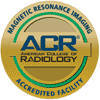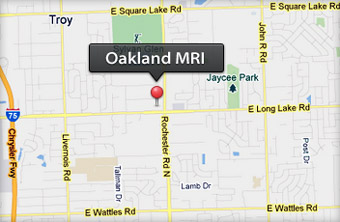Researchers estimated Wednesday that mammograms caused more than 1 million American women over the past three decades to be diagnosed with early-stage breast cancers that would not have proved fatal if left undetected and untreated — a controversial finding sure to provoke more heated debate over the benefits of the screenings.
The study, published in the New England Journal of Medicine, concluded that these women were “overdiagnosed” and “overtreated” because there was not a corresponding decline in the diagnosis of tough-to-cure breast cancers that have already spread. The authors said mammography has saved few lives.
“There’s been a dramatic increase in early-stage breast cancers that coincides with an increased use of mammograms,” said study co-author Dr. H. Gilbert Welch, a professor of medicine at the Dartmouth Institute of Health Policy and Clinical Practice in Hanover, N.H. “But it’s not enough to find early-stage breast cancer; it must translate into fewer women being diagnosed at a later stage, and we found this decrease to be remarkably small.”
But breast cancer specialists heatedly disputed the findings, with some calling the study “junk science” and others questioning the size of the overdiagnosis harms estimated by the researchers.
Dr. Leonard Lichtenfeld, deputy chief medical officer of the American Cancer Society, said that the findings “must be viewed with caution” and that the society stands by its recommendation for women to have annual screening mammograms beginning at age 40. “We find that the evidence supports the conclusion that mammography saves lives, and that the benefits of screening mammography outweigh the risks and harms.”
The new findings may leave women in a quandary, because some breast tumors caught early by mammography will turn out to be life-threatening, but doctors can’t tell which ones. Even the authors said women should continue to be offered mammograms.
Welch and his co-author Dr. Archie Bleyer, a clinical research professor at the Oregon Health and Science University in Portland, culled through federal government cancer surveillance data of breast cancer diagnoses from 1976 (before mammograms came into widespread use) through 2008, and found that diagnoses of small, self-contained breast tumors increased by 122 cases per 100,000 women over three decades, while diagnoses of advanced disease decreased by only 8 cases per 100,000 women.
In 2008 alone, the researchers estimated, breast cancer was overdiagnosed in more than 70,000 women, accounting for nearly one-third of all breast cancers diagnosed.
But getting to this conclusion involved a lot of tricky calculations, such as accounting for the routine use of hormone replacement therapy in the 1980s and 1990s, which studies have shown contributed to an increased rate of breast cancers. The researchers themselves wrote that their effort to erase the impact of hormone therapy was “admittedly imprecise.”
Another subject of contention in the study is how much mammography has contributed to a decline in the breast cancer death rate. The researchers argued that most of the decline can probably be attributed to newer, more effective treatments, but other specialists disagreed with that assessment.
Lichtenfeld said it’s “impossible to tease out the exact contributions” of a number of factors including mammography, better treatments, and increased breast cancer awareness that leads women to get breast lumps examined by their doctors.
Dr. Daniel Kopans, a senior radiologist at Massachusetts General Hospital who has been a strong advocate for mammography, questioned why the study was published in the prestigious New England Journal, calling it “junk science” that could be used to “deny women access to screening.”
Others, however, defended the researchers’ conclusions, saying the study verifies research data that’s been published in other countries. “They just took a different way of looking at the likely benefits of mammographic screening and the overdiagnosis rate,” said Dr. Michael Barry, president of the Informed Medical Decisions Foundation.
Previous research suggests that if 10,000 women are screened for 10 years, there will be 5 fewer breast cancer deaths and 50 extra breast cancers diagnosed. That compares to prostate cancer screening, which leads to 7 fewer cancer deaths per 10,000 men screened and 350 extra cancers diagnosed. The high rate of overdiagnoses led an expert panel last spring to recommend against the use of the prostate specific antigen (PSA) blood test to screen men for the disease.
The same panel, called the US Preventive Services Task Force, three years ago stopped recommending mammograms for women in their 40s based on the negligible lifesaving benefits seen in clinical trials and the high rate of false findings; that decision was met with heated criticism and a mandate in the federal health law for insurance companies to cover mammography for all women age 40 and over.
While mammograms find many cancers that would have never become life-threatening, they can’t distinguish between harmless and lethal cancers, so for an individual woman any early detection of breast cancer has potentially life-saving benefits.
Women should, though, be informed that those benefits are small, Barry said, and make the judgement call on whether screening is right for them. “We’ve tended to oversell its benefits and understate its risks,” he added, which include diagnosing and treating minute self-contained cancers such as ductal carcinoma in situ that may have never gone on to progress into aggressive tumors.
Welch agreed. “The answer isn’t to eliminate mammography,” he said, “but to start telling the truth about it.”
In an editorial that accompanied the study, Robert Smith, the American Cancer Society’s director of cancer screening, wrote that women should view mammography as a kind of insurance policy. “As with all insurance, there are costs for protection against adverse events that have a low probability of occurrence,” he wrote, “but that could be catastrophic if they occurred without the insurance.”

